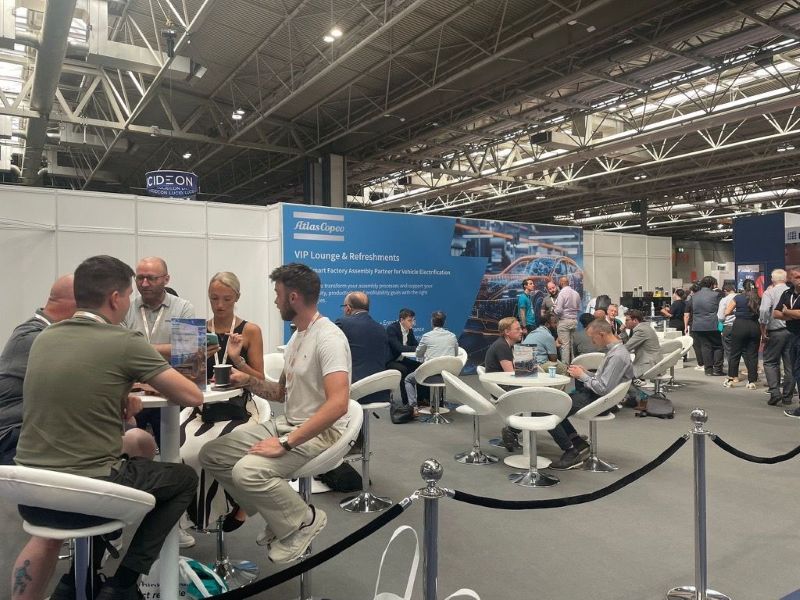TOKYO, Sept 30, 2014 – Japan would be the perfect place for global automakers to test out various micro-mobility solutions due to strong Government support and an ageing population, says Frost & Sullivan.
“Micro-mobility solutions will be suitable for first and last mile connectivity to public transport in urban areas such as Tokyo and for short distance travel in rural areas where there are no sufficient public transport infrastructure,” said Mr. Masaki Honda, Consulting Director, Automotive Practice, Asia Pacific at Frost & Sullivan.
Micro-mobility vehicle is defined as a compact sized vehicle designed for personal mobility with one or two passengers. There are different types of micro-mobility vehicles such as standing, chair, cycle and car-type and most of them run via electricity.
Mr. Honda said that micro-mobility solutions are essential to a large megacity such as Tokyo, with more than 37 million people living in the Greater Tokyo area. He noted that the railway stations in Japan are also amongst the busiest in the world with an average of over 3 million people daily at the Shinjuku station.
He added that micro-mobility solutions are equally important in the rural areas of Japan, which are usually not well connected by public transportation systems. “Rail system would be too expensive to build due to the relatively low population in the rural areas. There are only very few buses running every hour, which is inconvenient for the residents,” he said, adding that residents in the rural areas relied heavily on individual modes of transportation such as car and motorbike even though it is for a short distance.
Mr. Honda also noted that as an older population is more prominent in the rural area, micro-mobility solutions such as chair-type vehicle could provide an alternative for residents who are too old to drive a car.
However, he said that there are various challenges faced by micro-mobility solutions globally as it is a new vehicle concept and not clearly categorized as car or motorbike. “Hence the regulations and legislations applied to micro mobility are ambiguous, and currently many types of micro-mobility vehicles are not allowed to be used on public roads,” he added.
He noted that the Ministry of Land, Infrastructure, Transport and Tourism in Japan has used data collected from prototype micro-mobility solutions tested on public roads from 2010-2012 to set up a guideline on micro-mobility in Japan and will introduce a new vehicle category for micro-mobility in 2016. Automakers such as Nissan and Honda are starting to develop various micro-mobility solutions based on the guidelines.
Mr. Honda said that experiments on the practical use of micro-mobility solutions in several cities in Japan have started from 2013, and will continue until 2015.
He added that each experiment has its own objective to explore potential of micro mobility. He noted that Yokohama City has been doing an experiment on micro-mobility since 2013 under the service name of “Choi Mobi”, which objectives are to promote low emission transportation and to improve city transportation through one-way car sharing with micro-mobility.
Under the “Choi Mobi” program, Nissan has provided 100 units of car-type micro-mobility vehicle, the New Mobility CONCEPT while Hitachi provided systems to manage vehicles and payment, and Mitsui Real Estate and other companies provided parking spaces.
As of August 2014, over 10,000 members are registered under the Choi Mobi program. The member can use a one-way car sharing service with micro-mobility solutions such as ultra-compact cars at 63 stations in Yokohama City.
Mr. Honda said that car sharing services have become popular in recent years in Japan due to high parking costs, convenient public transport system and high fuel costs. However, he added that two-way car sharing is still dominant and a user must return a car at the same station that he or she rents from. Hence the usage of two-way car sharing is rather rent-a-car service in shorter hours.
Mr. Honda said that the one-way car sharing is suitable for first and last mile connectivity for shorter distances travelled, which cost JPY 20 (USD 0.20) per minute. He said that majority of users use the one-way car sharing services for an average of 16 minutes to travel 3 kilometers. He added that the service is well accepted by residents in Yokohama City, including tourists, businessmen and office workers.
He also said that other cities in Japan have been testing other potentials and opportunities such as renewable energy, robotics, and logistics by using micro-mobility solutions.
Mr. Honda said that micro-mobility solutions are currently available quite popular in Europe and United States. He added that Renault’s Twizy has been in the market in Europe and people are using it like a car. In Washington D.C. in the United States, a standing-type micro mobility, Segway, can be used on public roads by tourists.
Frost & Sullivan believes that Japan could be a hotspot for micro-mobility solutions and could be a leader in the micro-mobility solutions market globally.
About Frost & Sullivan
Frost & Sullivan, the Growth Partnership Company, works in collaboration with clients to leverage visionary innovation that addresses the global challenges and related growth opportunities that will make or break today’s market participants.
Our “Growth Partnership” supports clients by addressing these opportunities and incorporating two key elements driving visionary innovation: The Integrated Value Proposition and The Partnership Infrastructure.
The Integrated Value Proposition provides support to our clients throughout all phases of their journey to visionary innovation including: research, analysis, strategy, vision, innovation and implementation.
The Partnership Infrastructure is entirely unique as it constructs the foundation upon which visionary innovation becomes possible. This includes our 360 degree research, comprehensive industry coverage, career best practices as well as our global footprint of more than 40 offices.
For more than 50 years, we have been developing growth strategies for the global 1000, emerging businesses, the public sector and the investment community. Is your organization prepared for the next profound wave of industry convergence, disruptive technologies, increasing competitive intensity, Mega Trends, breakthrough best practices, changing customer dynamics and emerging economies?




